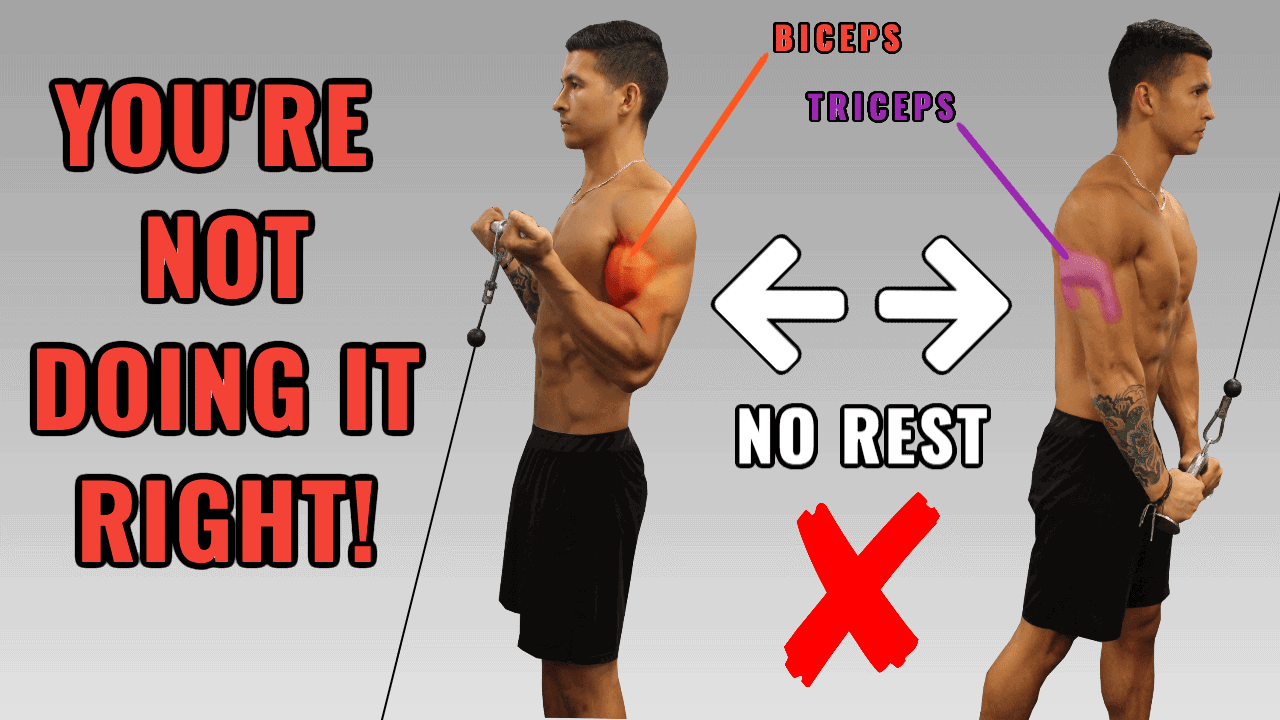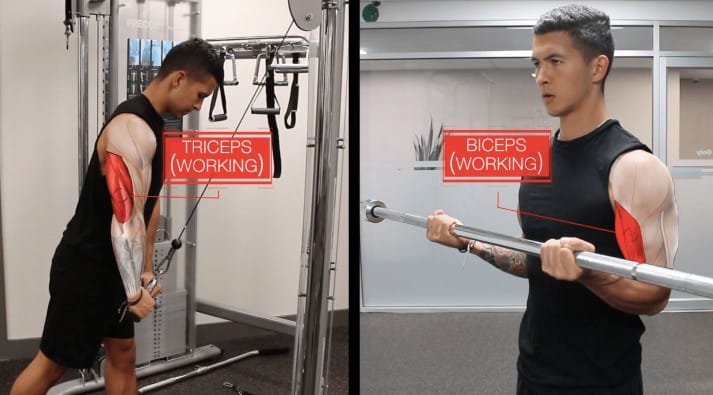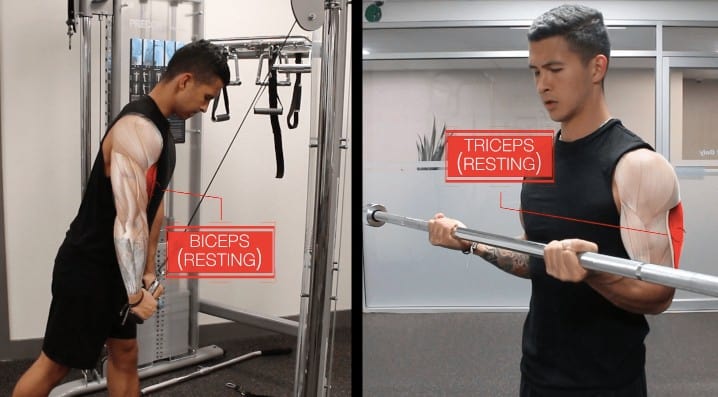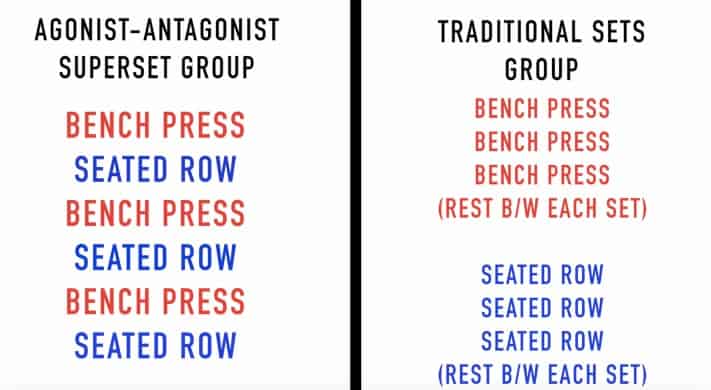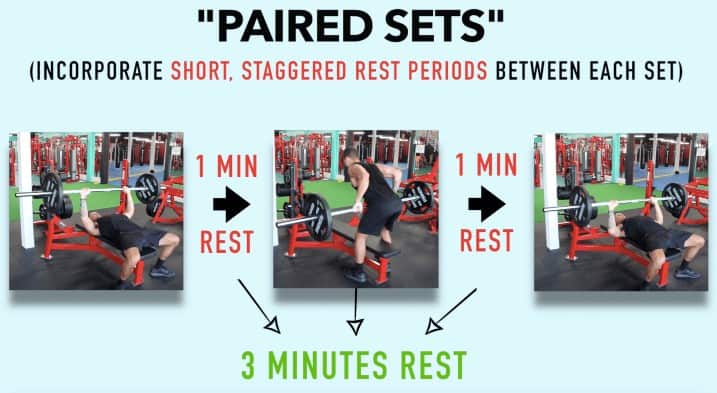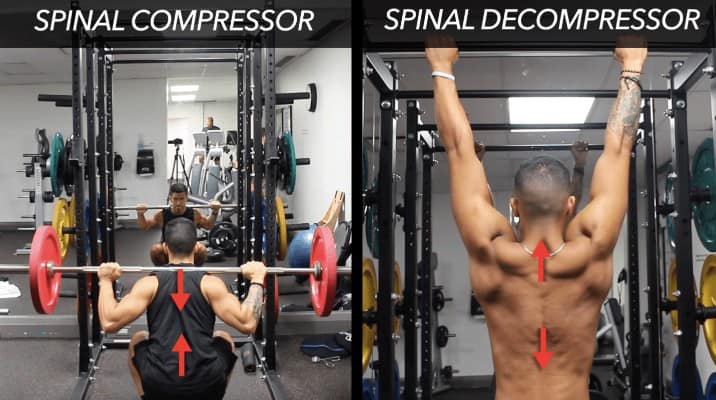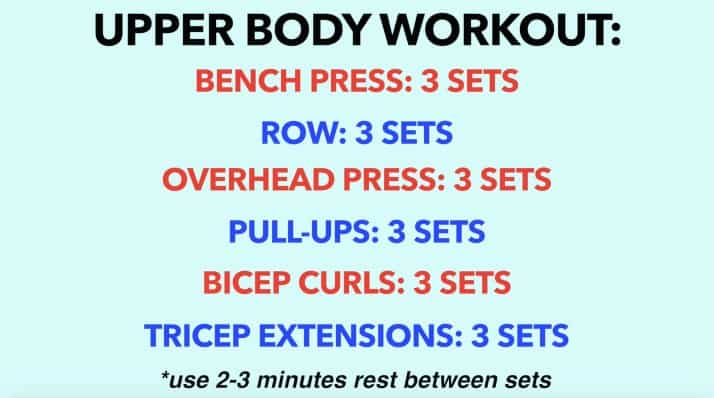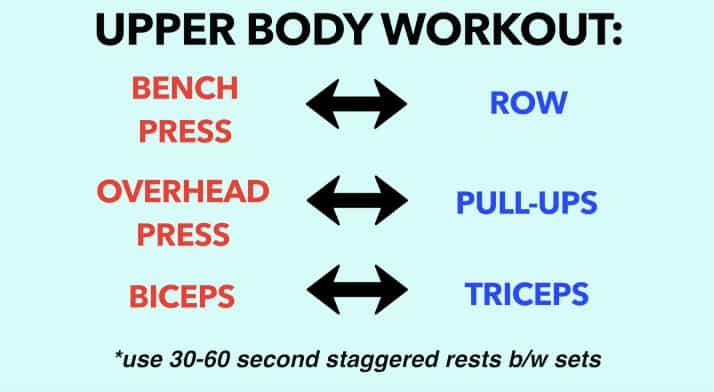How to superset PROPERLY to Maximize Muscle Growth (3 Science-Based Tips)
If you want to learn how to properly use supersets to save time and enhance muscle growth, then you need to read this article.
When it comes to structuring your workout, there’s a ton of different tools that you can incorporate to maximize your time in the gym and enhance muscle growth. Supersets, for example, are a well known and frequently incorporated tool thought to boost muscle growth.
What does a superset mean in the first place?
Simple - you perform two different exercises back to back with minimal rest between sets. This opposes the traditional set method of completing all your sets with a single exercise and then moving on to the next.
They’re mainly used to save time in the gym by potentially cutting your workout duration in half, but as you’ll see may also provide additional benefits in terms of muscle growth.
However, despite their popularity, most people just don’t utilize them in a way that maximizes their effectiveness. And instead of benefiting them, supersets become detrimental to their workout and muscle growth.
In this article, I’ll go through 3 evidence-based tips explaining how to use supersets to maximize growth while cutting down your workout duration. By the end of this article, you’ll learn how to do supersets properly.
If you appreciate science-based training insights, you’re going to love the BWS programs. I’ve designed every single one of them to contain valuable knowledge on why (exactly) you’re training the way you are. This way, you’ll gain a deeper understanding of optimal lifting principles – while experiencing the quickest gains possible. If you’re interested:
Click the button below to take my analysis quiz to discover the best program for you:
↓
1) Superset Muscle Groups that Don’t Interfere with Each Other
Now although you can theoretically superset any two muscles with each other, if you want to see the best results then it’s important that you choose the right ones.
My recommendation is to mainly stick with what are called agonist-antagonist supersets. This simply means that you superset two muscles that have the opposite function.
For example, the biceps mainly work to flex the elbow whereas the triceps mainly work to extend the elbow.
Why do I recommend this?
I recommend this when learning how to superset properly, for 3 main reasons.
First off, as shown in my rest periods article, we know that muscle growth and strength is optimized with rest periods of around 2-5 minutes between sets.
So if you were to do a superset of the same muscle group, for example alternating between the bench press and pushups, you wouldn’t be providing your target muscle with adequate rest.
Whereas when you use agonist-antagonist supersets, one muscle rests while the other works.
Thus enabling you to cut down your workout duration without negatively affecting your rest times and performance.
And secondly, supersets of the same muscle group seems to do more harm than good.
As shown in this 2017 study from the Journal of Strength and Conditioning Research , when supersets for the same muscle group are used it causes excessive muscle damage and negatively interfere with the recovery process - without providing additional benefit.
Lastly, utilizing agonist-antagonist supersets also seems to actually enhance performance when compared to other forms of supersets or even traditional sets.
For example, this 2017 study by Paz and colleagues compared agonist-antagonist supersets of the bench press and seated row. In the superset group, subjects alternated between the two exercises whereas in the traditional set group the subjects first did 3 sets of bench press and then 3 sets of seated row.
The researchers found that the superset group was not only able to complete their sets in half the time, but they were also able to perform better during their sets. They were able to lift heavier and/or lift more reps and thus achieved more total volume in their workout when compared to the traditional set group.
And interestingly, his finding that has also been replicated in multiple other studies of similar design.
Although it’s unclear as to why exactly this occurs when agonist-antagonist supersets are used, it’s speculated that some mechanism within the stretch-shortening cycle of your muscle enables you to achieve more volume when this form of superset is used.
Therefore, for these reasons, I’d suggest mainly incorporating supersets with the following paired muscle groups and ideally incorporate opposing movement patterns for each of these supersets:
- Chest and back (e.g. bench press and barbell row – horizontal push with a horizontal pull)
- Biceps and triceps (e.g. rope biceps curl, rope pushdowns – elbow flexion with elbow extension)
- Quadriceps and hamstrings (only for isolation movements – knee extension and knee flexion)
Keep in mind that incorporating supersets for unrelated muscle groups like shoulders and calves are a viable time-saving option as well but just doesn’t seem to provide the enhanced effect previously mentioned.
But regardless of what type of superset you choose to use, the two next points should first be taken into account.
Not sure how all this applies to your training program? Don't worry. Our 3-on-1 coaching program can help. You are going to have a coach to focus solely on your training and making all your workouts customized to you, your goals, and the equipment you have available. A dietitian and I will also be available to guide you every step of the way. If that sounds good to you, then:
Click the button below to find out more about the 3-on-1 coaching program:
↓
2) Use Staggered Rest Periods (Paired Sets)
As mentioned previously, you need to stick to rest periods of roughly 2-5 minutes for most of your exercises - and this still holds true when utilizing supersets.
Meaning that during a superset if you’re jumping from one exercise to the next right away, and then immediately back to the first exercise, you’re not providing your muscles with the optimal rest time and your performance will suffer as a result.
Therefore, you want to instead use what are called paired sets, which is something that was incorporated in the previous studies I mentioned that found supersets to be beneficial.
Now paired sets simply means that rather than going from one exercise to the other right away, you instead incorporate shorter staggered rest periods in between.
For example:
- Performing the bench press
- Resting for a minute
- Performing the barbell row
- Resting for another minute
- Going back to the bench press again.
This way you’re not compromising performance since you’re still getting the total recommended 3 minutes of rest between sets for both exercises. Not to mention you're still saving time in the process.
And for less demanding exercises like curls and extensions for example, you can use shorter 30-45 second staggered rest periods to allow at least 2 minutes of rest for each muscle.
3) Avoid using supersets on taxing movements
Now despite what I’ve said in the last 2 tips, I would for the most part advise against utilizing supersets on certain movements. Mainly the squat, deadlift and the various Olympic weightlifting movements.
This is because supersetting very taxing movements like these can potentially do more harm than good.
For example, one 2014 study from the Journal of Strength and Conditioning Research makes this point clear. The researchers found that even when staggered rest periods were used with a superset between the squat and row, the subjects couldn’t do as many reps with the squat when compared to using a traditional set approach.
...and the same would likely be true for the other taxing exercises I mentioned as well.
However, with that being said, if you want to best utilize your rest time with squats then I think that one great and viable superset for the squat would be the scapular pull-up.
This is because the squat is a spinal compressor since your feet are fixed on the ground and the weight pushes you down. Whereas the scapular pull-up is a spinal decompressor since you’re hanging from the bar and lengthening your body.
And since the scapular pull-up isn’t a taxing movement at all AND in fact might even boost your squat performance rather than hinder it since it helps activate the muscles that keep your back set and upright during the squat - it makes for an effective superset.
But again, use what I mentioned in tip number 2 by incorporating staggered rest periods between each exercise to minimize any potential negative effects on your performance.
Putting Supersets Into Practice
So to put it into practice, here’s a sample upper body workout that can be shortened with the use of supersets:
The above upper body workout, once supersets are implemented, would then become:
As you can see, this enables the workout duration to be cut down substantially. But this also means that your workout will be more taxing mentally and cardiovascular wise. So if you’re just starting out in the gym or aren’t very fit cardiovascular wise, you may want to refrain from supersets. Or just use them sparingly until you feel more comfortable with them.
Are supersets good for muscle growth?
Yes, supersets are good for muscle growth — but this “yes” is dependent on 3 things:
- It’s an agonist-antagonist superset: Research shows that supersetting 2 exercises that train the same muscle group (e.g., delts, then delts again) could cause more muscle damage and the potential to impact long-term training volume negatively — the ultimate determinant of muscle growth to a point — compared to an agonist-antagonist (e.g., chest, then back) superset.
- You rest in between: To increase the chances of hitting the optimal rest period even when performing supersets, incorporate short, staggered rest periods between each exercise. For example, if you’re doing the bench press and barbell row as a superset, you could:
- Perform the bench press, rest for 1 minute, then
- Do the barbell row (which would take you roughly 1 minute), then
- Rest another minute before doing the bench press again
- You’re smart about your exercise choice: I wouldn’t recommend supersetting certain movements. These would include the squat, deadlift, and various Olympic weightlifting movements.
Ultimately, it’s important to remember that whether supersets are good for muscle growth is relative.
It may provide better hypertrophy results than grouped supersets, but what about when compared to your “traditional straight sets” (i.e., where exercises are performed in isolation)?
So far, the research seems promising.
Studies have found that agonist-antagonist supersets lead to equal (e.g., this, this, and this) or potentially even improved training volume (e.g., this and this) compared to traditional set training within a single training session.
While more research is needed to see whether supersets can lead to better hypertrophy results compared to traditional sets in the long term, the fact remains that agonist-antagonist supersets are currently your best bet for maximizing gains when in a time crunch.
But all in all, when done properly, supersets do seem to be an effective tool to both save time and enhance performance. Now as for whether this would lead to more muscle growth in the long run when compared to not using supersets at all is definitely up for debate and will require further long-term research for a definite answer.
That's pretty much it! Hopefully you learned a thing or two from this article. Feel free to let me know if you have any questions down below. And give me a follow on Instagram , Facebook , and Youtube where I’ll be posting informative content on a more regular basis. Cheers!
And for those looking for a complete step-by-step program that uses science to show you how to properly train AND eat week after week to transform your body in the most efficient and injury-free way possible, then:
Click the button below to take my analysis quiz to discover the best program for you:
↓






